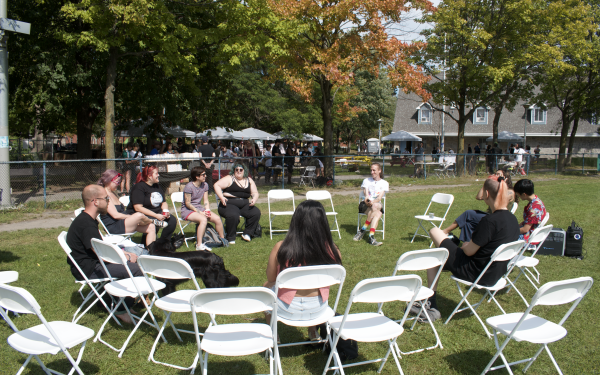Editorial: Disconnected understanding
Last week, 9,000 academics and delegates flocked to Concordia for the 2010 Congress of the Humanities and Social Sciences, taking our downtown campus by scholarly storm. They attended over 1,500 events with an aim of “sharing groundbreaking research and examining the important social and cultural issues of the day,” according to Concordia’s humanities and social sciences website.
Last week, 9,000 academics and delegates flocked to Concordia for the 2010 Congress of the Humanities and Social Sciences, taking our downtown campus by scholarly storm. They attended over 1,500 events with an aim of “sharing groundbreaking research and examining the important social and cultural issues of the day,” according to Concordia’s humanities and social sciences website.
Speakers came from far and wide from May 28 to June 4 to discuss seemingly disparate topics and revel in their accumulated knowledge, transforming Quartier Concordia into a hub of academics who were free to think deeply, network with other researchers and listen to themselves speak about their deep thoughts and research.
Hosting this conference, which is one of the largest in North America, was a proud moment for our school, and took over two years of paid full-time work to plan. It also required over 200 volunteers to pull off.
With major eyes and minds congregating on our campus, the administration wants us all to swell with Concordia pride—because damn it, we look really, really good in the public eye.
The university certainly outdid itself to look the part of a world-class institution of learning. For the first time in many of our undergraduate careers, de Maisonneuve Boulevard was completely free of construction, allowing delegates to cross the street without obstruction or constant fear of being hit by cars, Norman Bethune was greened and hooked up with an additional statue, and the Hall Building got a fancy new sticker on the front door complete with Article 26 from the Universal Declaration of Human Rights advocating free education.
It’s that last one that really got us.
These beautifying measures, in association with all the wining and dining of academics, ensured that those who attended the events remember Concordia as one of the best and brightest schools in town—but what happens now?
For many of us average-Joe-or-Jill Concordians who weren’t aware of the conference, there will not be any informative tents or helpful volunteers to show us around in the fall. The shine of the fresh floors and walls will wear off, the escalators in the Hall building will stop working again—assuming they got them to work any better for Congress, which would be an act of divine intervention—and, for the many international students who won’t be returning to our school because of hikes in tuition, having Article 26 slapped on the side of the Hall building is a slap in the face.
This university has pushed through some of the highest tuition hikes in Quebec in the past year—in some cases doubling tuition without so much as warning the affected students—which clearly violates the spirit of the Article on the door.
I wish we could say with confidence what Concordia has learned from this event, besides the fine art of self-adulation. The millions of dollars dropped into the Quartier Concordia project, the new buildings and the hundreds of thousands spent for a new logo only show how flash supercedes substance at this school.
So what came from all this academic schmoozing? A promise made to better integrate aboriginals into Canada’s school system, which is one of the few things that should be applauded, and a lot of other talk.
While congress claimed that “the important social and cultural issues of the day” would be discussed, media highlights from the conference praised research about smart clothes, the he-cession, middle-aged angst, the restorative properties of a ramble in the woods and soul-searching about the future of the social sciences.
In the future, a meeting of 9,000 of the smartest people we can find should lead to more than this. At what point does academia turn into action?
This article originally appeared in Volume 31, Issue 1, published June 11, 2010.

_600_832_s.png)

__600_375_s_c1.png)

_600_375_90_s_c1.jpg)
